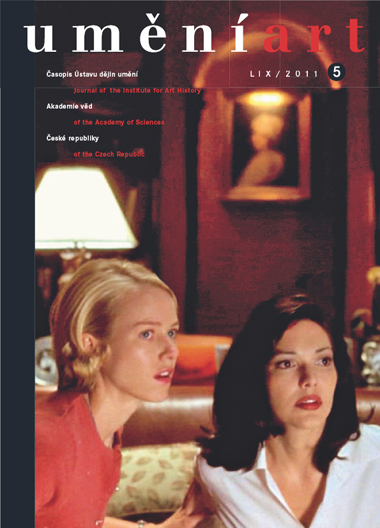Petra Polláková
The Case of Beatrice Cenci: From Guido Reni to David Lynch
This study examines the rich iconographic tradition of a baroque painting by an unknown artist from the collections of Galleria Nazionale d´Arte Antica in Rome. The picture depicting the bust of a young woman wearing a plain white robe and a cloth wrapped turban-like around her head was erroneously interpreted at the end of the 18th century as a portrait of the Italian noblewoman Beatrice Cenci, who was executed in 1599 for complicity in the murder of her father Francesco Cenci. As Francesco was known for his tyrannical treatment of his family, general sympathy went out to Beatrice. She was admired for her beauty and the courage with which she faced imprisonment and torture. The dramatic case was exacerbated by the suspicion raised by the Cenci family lawyer that Francesco had sexually abused his daughter Beatrice. Although this suspicion was never proved, it brought Beatrice the aureole of a martyr and gave rise to various romanticised legends about her life and the time she spent in prison. In the middle of the 18th century the Cenci story appeared in a popular chronicle, Annali D'Italia, published by the Italian scholar Muratori. In the late 18th century, a painting of a young woman that was held to be a portrait of Beatrice Cenci was discovered in the Colonna family collection. Soon afterwards the painting began to be associated with the Italian baroque painter Guido Reni. A dramatic legend arose around the circumstances in which the painting was done, claiming that Reni visited the prison on the eve of Beatrice's execution. The first part of this article focuses on the possible circumstances surrounding the development of the legend of the portrait being painted in prison and the possible reasons for the traditional association between Reni and this work of art. The romantic story and the picture associated with it captured the imagination of many European and American writers and artists, especially in the 19th century, who drew inspiration from the tale and the painting for their own works. Fascination with the assumed portrait of Beatrice Cenci has endured into the 20th century and is still a living part of popular culture, as is evident, for example, from one contemporary American film in which the motif of the alleged portrait of Beatrice Cenci also appears and makes interesting reference to the traditional presence of this theme in American literature.
Full-text in the Digital Library of the Czech Academy of Sciences:
https://kramerius.lib.cas.cz/uuid/uuid:1a4f33f2-01a0-db41-51d1-eeb1712549ea
< back

